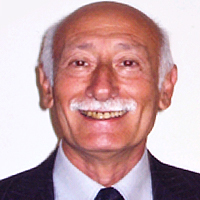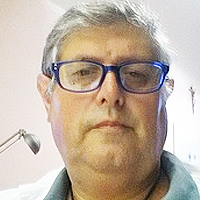Pulse Synchronized Contractions (PSCs)
Published on: 15th November, 2019
OCLC Number/Unique Identifier: 8319360286
A key platform underpinning the traditional understanding of the cardiovascular system, with respect to the behavior of large arterial vessels, is Otto Frank’s Windkessel Hypothesis [1]. This hypothesis posits simply that the smooth muscle walls of large arteries do not undergo rhythmic contractions in synchrony with the heartbeat but, rather, behave as passive elastic tubes undergoing distension from pulsatile pressure waves. The Windkessel Hypothesis is elegant, well described for over a century, ingrained in the understanding of cardiovascular medicine and physiology, and simply wrong.
Several groups have now shown that the arterial smooth muscle wall undergoes rhythmic activation in synchrony with the heartbeat in a variety of tissues, including human brachial artery; canine coronary, femoral, and carotid arteries; rabbit aorta; feline pulmonary artery and rodent aorta [2-8]. The phasing of these events is such that the upstroke of the contraction slightly precedes the upstroke of the pulse wave, suggesting nomenclature for the events as pulse synchronized contractions, or PSCs [3,6-8].
PSCs have been found to be of neurogenic origin, sensitive to the neural blocker tetrodotoxin [3,8]. Although the specific neural pathways regulating PSCs have not been elucidated, the alpha-adrenergic system is at least partially involved, as evidenced by reduction or blockade of PSCs by the alpha-adrenergic blocker phentolamine [8]. Further, PSCs have not been observed following vessel excision in in vitro studies, as an intact nervous system is not present. The pacemaker for the PSC resides in the right atrium, as suggested by two lines of evidence. First, pacing of the right atrial region to faster than spontaneous frequencies leads to a one-to-one correspondence of PSC frequency with the stimulation rate [3]. Additionally, excision of the right, but not the left, atrial appendage results in elimination of PSCs [3]. As the pacemaker region for PSCs and the heartbeat both lie in the right atrium, this may potentially allow for coordination between the heartbeat and pulse wave with PSCs [3,5,8]. Extensive evaluations also have been performed showing the PSC was not an artifact produced either by cardiac contractility or from the vessel distension from the pulse wave [3,5,6].
Exploring novel medical applications for commonly used veterinary drug (tilmicosin antibiotic)
Published on: 31st August, 2017
OCLC Number/Unique Identifier: 7325099093
Tilmicosin (TMC) is a semi synthetic macrolide antibiotic of tylosin derivatives commonly used by veterinaries, has been shown to reveal beneficial pharmacological activities. In the current study, the potential wound healing activity, Anti-oxidant effect (ulcer and hepatoprotective) were investigated. Anti-inflammatory, antipyretic, analgesic (central and peripheral), hypnotic and antispasmodic activity were also screened. This study included adult both sexes of rats (200-250 gm), mice (20-25 gm) and adult rabbits. Experimental wound was induced on the anterior-dorsal side of each rat whereas, ulcer induced by ethanol causing mucosal damage in rats. The oral anti-inflammatory induced through formalin producing edema, antipyretic (Brewer’s yeast induced hyperthermia) and analgesic (writhing test, hot plate method, tail immersion method) while hypnotic effects induced through thiopental sodium. Anti-spasmodic effect on isolated organs (intestinal and uterine muscles) using new method of Modular Single Chamber Organ Bath were carried out on experimental animals. Tilmicosin antibiotic at different two doses of 20 and 40 mg/kg b.wt., has an important role in treatment of ulcer (cytoprotective effect) and improvement the wound healing processes besides anti-inflammatory, analgesics, and anti-pyretic effects. Tilmicosin revealed also hypnotic and intestinal anti-spasmodic effects but showed Pharmacovigilence hepatotoxic effect through the histopathological studies which revealed sever hepatic damage especially at larger dose.
Equine Anti-Thymocyte Globulin (ATGAM) administration in patient with previous rabbit Anti-Thymocyte Globulin (Thymoglobulin) induced serum sickness: A case report
Published on: 23rd March, 2018
OCLC Number/Unique Identifier: 7666273824
Thymoglobulin is a rabbit-derived anti-thymocyte antibody directed at T-cells and commonly used for induction immunosuppression therapy in solid organ transplantation, especially in immunologically high risk kidney transplant recipients. Despite its frequent use and efficacy, the heterologous makeup of thymoglobulin can induce the immune system resulting in serum sickness which typically presents with rash, fever, fatigue, and poly-arthralgia in the weeks following drug exposure. ATGAM is another anti-thymocyte antibody, targeting the same epitopes, but differs from thymoglobulin by the animal in which the preparations are generated (equine vs. rabbit). Herein, we present a case of a patient with a known history of thymoglobulin-induced serum sickness, who presented with evidence of acute cellular and vascular rejection at their 12-month post-operative visit. Given their immunologically high risk status, they were successfully treated with ATGAM with improvement in their rejection and kidney function. To the author’s knowledge, this is the first case report of successful administration of ATGAM in a patient with a documented history of thymoglobulin induced serum sickness, demonstrating a possible treatment option for acute rejection in patients with reactions to thymoglobulin.
Effects of Balanites Aegyptiaca (del) Seed Cake on Growth and Carcass Performance of Growing Rabbit
Published on: 10th October, 2018
OCLC Number/Unique Identifier: 7906081729
A study on growth and carcass performance was conducted to evaluate the effect of Balanites aegyptiaca seed cake meal (BASCM) as a substitute for groundnut cake in the diet of growing rabbit. Five experimental diets were formulated representing the following treatments: T1, T2, T3, T4 and T5 respectively. T1 (0% BASCM) was served as the control diet, while T2, T3, T4 and T5 contained 25%, 50% 75% and 100% BASCM respectively. A total of 100 weaner rabbits of mixed breeds were purchased from the National Animal Production Research Institute (NAPRI), Zaria, Nigeria. The rabbits were fed the control diet during the one week of adjustment period. They were given vitalyte as anti-stress and were dewormed using ivermectin, at the end of one week of adjustment; the rabbits were housed in different hutches and fed their respective experimental diet for one month. Each treatment contained 20 rabbits and these treatments’ (T1-T5) each were replicated in four portions and each portion had five rabbits each. Results showed that all the parameters were significantly different (P<0.05) among the treatment groups. Balanites aegyptiaca seed cake meal can replace groundnut cake at 25% level inclusion without adverse effect on the rabbit physiology.
Comparison of Vitreous Protein Profiles of Rabbits subjected to Acute Carbon Monoxide poisoning and normal animal after death
Published on: 6th June, 2017
OCLC Number/Unique Identifier: 7286357384
Acute carbon monoxide (CO) poisoning is caused by the inhalation of large quantity of CO within short time leading to morbidity and mortality. In this study, a total of eighteen (18) rabbits were divided into three (3) groups of six (6) animals each. The first group first group was poisoned with CO and labelled carbon monoxide death (CD). The second group of animals was killed prior to exposure to CO and labelled disguised death (DD), while the third was the control group (CG). The vitreous humour samples were collected from all the animals using standard methodologies. The vitreous humour total protein and albumin were estimated while its globulin content and albumin/globulin ratio were derived mathematically. Pearson correlation analyses were used to establish relationships between vitreous protein profile components and the acute graded carbon monoxide concentrations. Results indicated a significant increase (P<0.05) in vitreous total protein and globulin of the studied groups. This observation was more pronounced in the CD group of animals. Therefore the marked elevation of vitreous total protein and globulin may serve as a useful tool in the confirmation of death due to carbon monoxide poisoning.
The Effect of Cement and wrapping on the Decomposition rate of the Rabbit Carcasses
Published on: 16th August, 2017
OCLC Number/Unique Identifier: 7286357028
Taphonomic study was first time conducted in Kuala Lumpur, capital city of Malaysia. In this research model, male Oryctolagus cunicullus weighed 1.8-2.6 kg each were killed by Dolethal intravenously at the ear region. In Phase 1 study, eight subjects were wrapped in a sack and cemented within a container to be compared with the other four controls at each location labelled A (ground) and B (manmade freshwater pond). Phase 2 involved duplicating set of 15 cemented samples comparable to 1 control made up to total of 32 subjects which were all put into a compact polytank containing freshwater to simulate a case study. Taphonomic changes were observed and scored using TBS system incorporating of fresh stage, early decomposition stage, advanced decomposition stage and skeletonisation stage. The ambient temperature of surroundings with 28.81C±4.21°C and 29.21°C±4.57°C (mean±S.D.) while relative humidity of air with 74.49 %±14.61% and 79.15%±16.32% (mean±S.D.) were recorded for Phase 1 and Phase 2 study respectively. Time taken for ground control exposed and wrapped carcasses to reach first sign of skeletonised stage were four days and five days respectively. Whilst freshwater controls reached initial skeletonised stage within one week for exposed carcass and two weeks for wrapped carcass. Within the control and cemented sample carcasses, TBS scores increased from initial stages of decomposition and become plateau after advanced decomposition. The cementing factor have superseded the wrapping factor due to its stronger physical barrier effect to slow down the decomposition more than half compared to controls based on Multiple way ANOVA test. Phase 2 study has demonstrated more accurately on the decomposition rate of the cemented samples. It showed that wrapping and cementing factors have delayed the decomposition process of the rabbit carcasses about 4 times to reach the initial stage of skeletonisation compared to the control carcasses. There was absence of insect activity within the cemented samples, hence the microorganism activity would be the only contributor to the decaying process within the cemented samples at slower rate comparing to the exposed or wrapped controls.
Experimental ‘hindbrain related’ syringomyelia: some mechanisms of spinal cord damage
Published on: 6th October, 2017
OCLC Number/Unique Identifier: 7317596430
Syringomyelia in combination with inherent or acquired hindbrain abnormalities is the non seldom and at the same time controversial issue.
Purpose: The etiology and pathogenesis creates a lot of discussion.
Methods: Experimental syringomyelia was induced in 20 anesthetized rabbits by injecting 0.5 ml of 25% kaolin suspension into the cisterna magna. Six rabbits with puncture and injection sterile saline NaCl were used as a control. The animals were sacrificed 1, 2, 4 and 6 months after the kaolin injection. Four hydrocephalus rabbits were sacrificed in 17 hours after the puncture of lateral ventricle with injection of solution of colloidal gold labeled human albuminum. The sections of the brain and spinal cord were stained with hematoxylin and eosin by Nissle and Marchi methods and with immunogold technique. Retropharyngeal lymph nodes of the animals were examined by electron microscopy.
Conclusion: Our observation showed that water hammer effect and internal destruction of the spinal cord may lead to continuous antigen stimulation of regional lymph nodes and play an important role in pathogenesis of experimental syringomyelia.
Efficacy of ozonized sunflower oil as treatment of canine generalized demodicosis
Published on: 18th March, 2021
OCLC Number/Unique Identifier: 9124663088
Background: The acaricidal action of Ozonized sunflower oil (OSO) has demonstrated in different clinical cases of different animal species, such as psoroptic rabbits and pig sarcoptic scabies and recently in demodesic goat.
Objectives: This study evaluated the effectiveness of OSO as treatment for generalized demodicosis mange in dogs.
Animals: Twenty dogs of different breeds, between six months and one year of age with generalized demodicosic mange that attended to Veterinary Clinic “José Luis Callejas” Havana, Cuba, during the year 2015, were included in the study.
Methods: The demodicosis diagnostic was based on its clinical history, the mite’s presence by deep scraping and clinical signs. All cases had a history of receiving before conventional treatments without solution. OSO treatment was topically applied daily, every 12 hours, after shaving all affected areas. Monitoring of clinical signs, mite counting on scaling, pruritus and capillary regrowth (7, 14, 28, 56 and 84 days) were performed.
Results: The results showed a significant reduction of mite counts, clinical signs and pruritus since the 7th day of application. The animals recovered the fur on more than 90% of the body surface. All the animals (100%) recovered from generalized demodesic mange in 84 days of treatment.
Conclusion: The effectiveness and safety of OSO as election treatment of generalized demodicosis mange in dogs was demonstrated.
Validation of Kinetic Stem Cell (KSC) counting algorithms for rapid quantification of human hematopoietic stem cells
Published on: 28th November, 2022
Specific quantification of therapeutic tissue stem cells (TSCs) is a major challenge. We recently described a computational simulation method for accurate and specific counting of TSCs. The method quantifies TSCs based on their unique asymmetric cell kinetics, which is rate-limiting for TSCs’ production of transiently-amplifying lineage-committed cells and terminally arrested cells during serial cell culture. Because of this basis, the new method is called kinetic stem cell (KSC) counting. Here, we report further validations of the specificity and clinical utility of KSC counting. First, we demonstrate its quantification of the expected increase in the hematopoietic stem cell (HSC) fraction of CD34+-selected preparations of human-mobilized peripheral blood cells, an approved treatment product routinely used for HSC transplantation therapies. Previously, we also used the KSC counting technology to define new mathematical algorithms with the potential for rapid determination of TSC-specific fractions without the need for serial culture. A second important HSC transplantation treatment, CD34+-selected umbilical cord blood (UCB) cells, was used to investigate this prediction. We show that, with an input of only simple population doubling time (PDT) data, the KSC counting-derived “Rabbit algorithms” can be used to rapidly determine the specific HSC fraction of CD34+-selected UCB cell preparations with a high degree of statistical confidence. The algorithms define the stem cell fraction half-life (SCFHL), a new parameter that projects stem cell numbers during expansion culture. These findings further validate KSC counting’s potential to meet the long-standing unmet need for a method to determine stem cell-specific dosage in stem cell medicine.
















